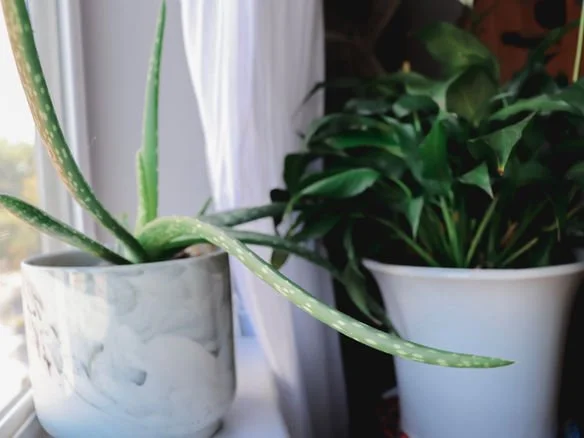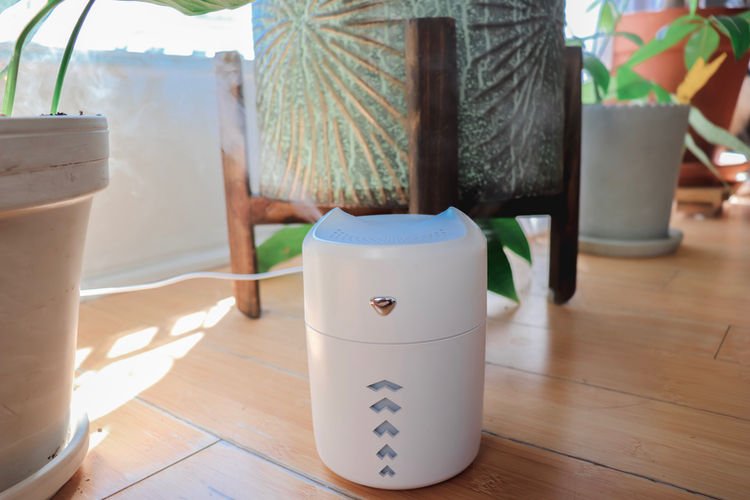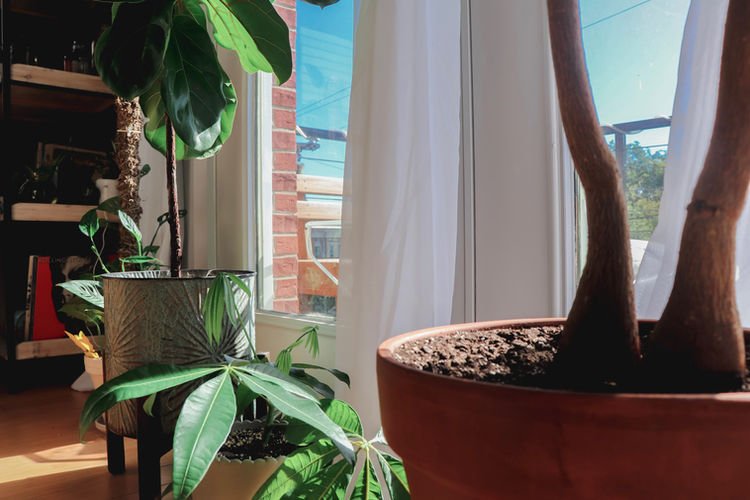Preparing Houseplants For Winter: How to Care For Your Plants During Colder Months
The days are getting shorter and colder, so it's time to change up how you care for your houseplants. Here are some quick tips on how to care for your indoor houseplants during winter!
Decrease Your Watering
Most plants go dormant in the colder months, which means you don't need as much water! If you water them at the same rate you would during the growing season (spring and summer) you could cause root rot or the plant could develop diseases.
Winter is when checking the soil and reading your houseplants comes in handy (we plant nerds call this intuitive gardening). As a good rule of thumb, water when the soil is dry one to two inches below the surface. Exceptions are those plants that need higher soil moisture like fittonia and ferns!
Increase The Humidity
The winter months bring dry air into play. One of the easiest ways to add additional moisture is through a humidifier! This will keep plants from browning and your nostrils from drying (lol had to).
Another easy way to up the humidity in your home is by grouping your plants. Plants release moisture through their leaves (called transpiration). By grouping your plants together you create a humid "microclimate" that will benefit your plants, especially during the winter months.
Another way to increase humidity is by using a pebble tray! A pebble tray is a tray or shallow dish filled with pebbles and water. Place your plant on top of the rock above the waterline. The water in the pebble tray will evaporate around your plant, increasing the humidity.
Avoid Too Much Heat
Too much heat will dry out a plant and kill it. Be sure to move plants away from fireplaces, heaters, and radiators.
Move Plants Closer to Windows or Buy Grow Lights
The days get shorter in the winter, which means less time for plants to enjoy the sunlight. To combat this, move your plants closer to the windows.
If you notice that the plants are not receiving enough light, invest in some grow lights. You don't have to go out and spend a bunch of money on grow lights. One of the easiest ways to increase some light is through specific light bulbs.
You can use an old lamp and just switch out the lights. Another great option is by using light strips. Light strips are perfect for shelving units that hold plants. Simply velcro the light strip to the top of your shelves for a makeshift grow shelf!
Wait To Repot In The Spring
Your plants are going into "hibernation" mode and that can be a stressful time for plants. I recommend waiting until the Spring to repot your plants. Repotting will stress out your plant so waiting to do so when they are not already stressed out is a really good idea.
In the human world that's equivalent to you uprooting your life and moving to a new state during the middle of a pandemic (major props to anyone who has done this).
Exceptions to this "rule" include rootbound plants that desperately need repotting. Most plants like to be a bit rootbound so this is for serious cases that can't wait till spring. For example, my mom's 30 plus-year-old asparagus fern that needed a big repot.
Avoid Cold Drafts and Breezes and Watch The Temperature
If you have a window that gets cold you will want to move your plants away from it. Don't crack open windows near plants as these breezes and drafts could chill them.
Most houses stay at a good temperature for plants, but be sure you don't allow your house to get too cold at night. You don't want the temp to get too low or your plant could frost and die!
Just make sure you are watching your plants and if you see signs they are unhappy do some detective work to figure out what's going on. Intuitive gardening hasn't let me down yet. Trust your plant gut!
Happy planting y'all,
Sav
**Plant Savvy is a participant in the Amazon Services LLC Associates Program, an affiliate advertising program designed to provide a means for sites to earn advertising fees by advertising and linking to amazon.com.



